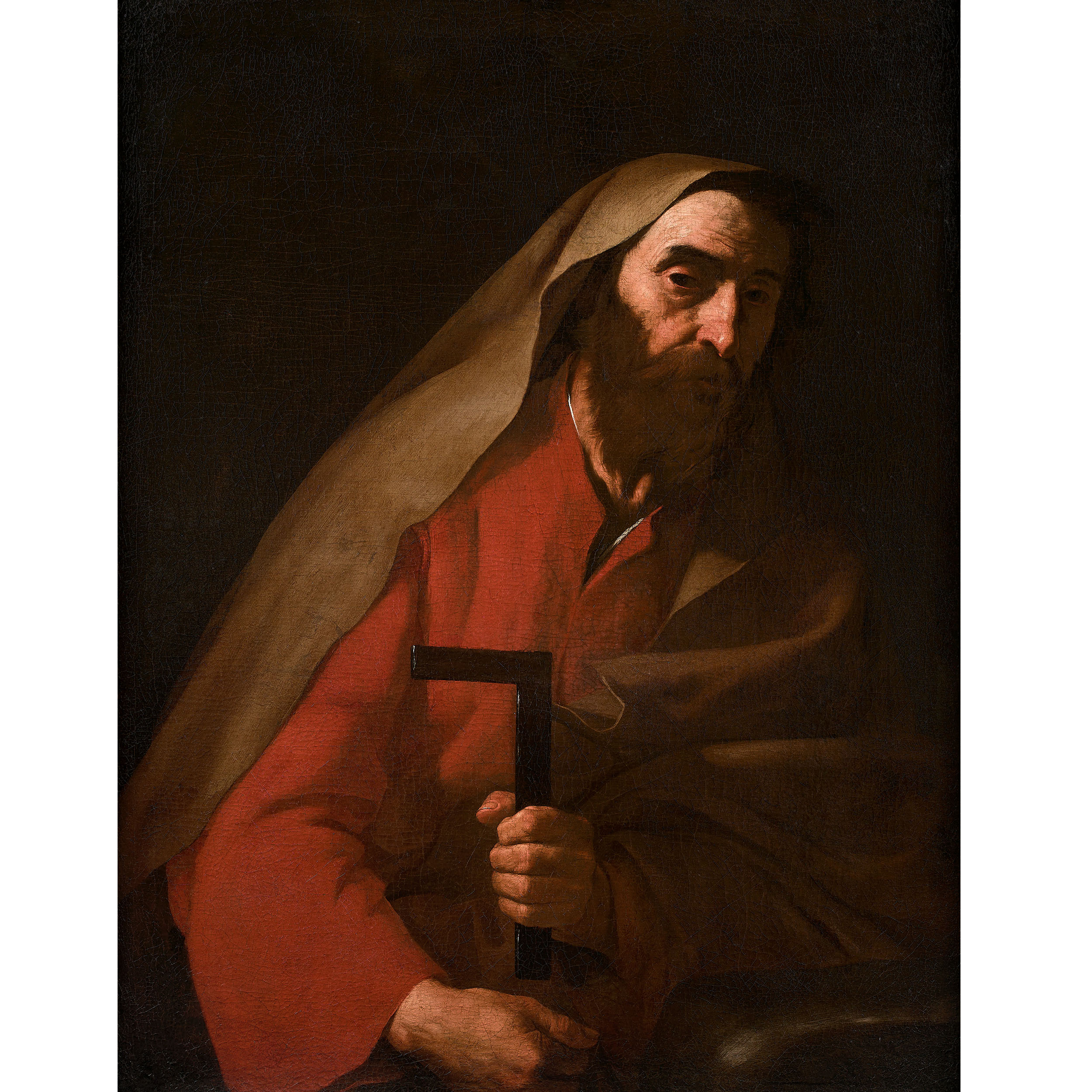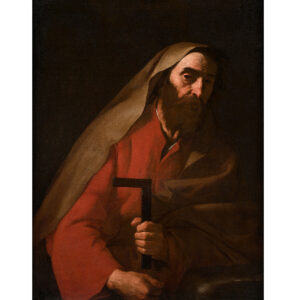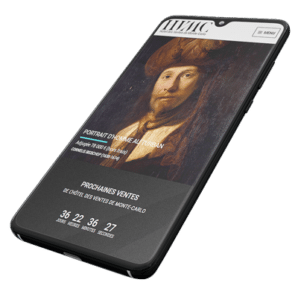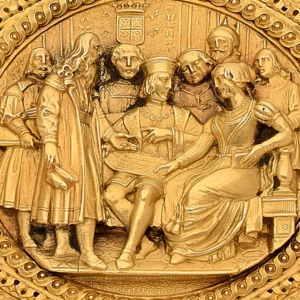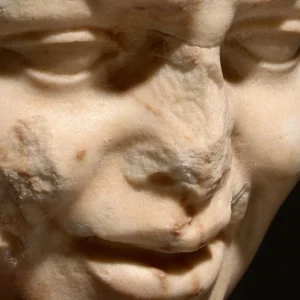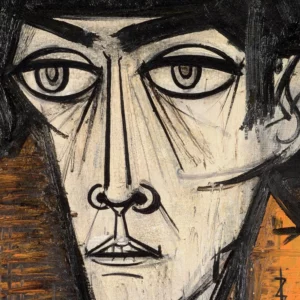Saint Thomas apôtre
Toile
Dans un cadre de la maison Samson
Restaurations anciennes
102 x 76,5 cm
Provenance:
Collection privée
Bibliographie:
Nicola Spinosa, Il Maestro degli Anunci ai pastori e i pittori dal « tremendo impasto » (Napoli 1625-1650), Ugo Bozzi editore, Rome, 2021, pp. 220-221, n. D10.
Né à Xàtiva au sud de Valence, Jusepe de Ribera arrive à Rome au milieu de la première décennie du XVIIe siècle, et adopte la manière réaliste et révolutionnaire du Caravage. Il devient l’un des disciples les plus importants du maître lombard et constitue rapidement un répertoire de figures à mi-corps ou de trois-quarts :
apôtres pour des séries (apostolado), saints, astronomes ou géomètres de l’Antiquité. Il signe les « Saints Pierre et saint Paul » (musée des beaux-arts de Strasbourg) vers 1616/1617.
Notre tableau a été publié pour la première fois par Nicola Spinosa en 2021 qui le date de 1616, avant le départ du peintre espagnol pour Naples. On peut reconnaitre l’apôtre Thomas par l’équerre qu’il tient dans sa main (selon une tradition hagiographique, Thomas aurait, pendant son voyage d’évangélisation en Inde, collaboré à la construction du palais du prince local Gondoforus). Cet outil en fait
le saint patron des architectes et bâtisseurs. On peut penser que les corporations de métiers jouèrent un rôle important dans le maintien et la diffusion de cet attribut. Cependant, l’équerre peut aussi se retrouver dans des représentations de l’apôtre Thaddée.
Le style de notre tableau, très fortement influencé par la leçon de Caravage en termes de lumière et correspondant à la manière du peintre dans les années romaines et peut être rapproché des deux apôtres Barthélemy et Thaddée, conservés à la Fondazione Longhi à Florence, de l’apôtre Jacques (collection Böhler, Munich), du Prophète du Museo Civico di Castello Ursino (Catane), de l’Origène
de la Galleria Nazionale delle Marche (Urbino), du saint Augustin de la Galleria Regionale de Palerme) et du saint Antoine de Barcelone (El Conventet).
Un certificat du professeur Nicola Spinosa daté d’avril 2022 sera remis à l’acheteur.
Eric Turquin nous présente une œuvre de :JUSEPE DE RIBERA (JAVITA 1588 - NAPLES 1656 )SAINT THOMAS APOSTLECette pièce sera mise en vente le dimanche 8 mai à l 'Hôtel des Ventes
JUSEPE DE RIBERA (1588-1656)
Saint Thomas apostle
Canvas
In a farme of the Samson house
Old restorations
40.15 x 30.12 inch
Bibliography
Nicola Spinosa, Il Maestro degli Anunci ai pastori e i pittori dal “ tremendo impasto“ (Napoli 1625-1650), Ugo Bozzi editore, Rome, 2021, pp. 220-221, n. D10
Born in Xàtiva, Spain, just to the south of Valencia, Jusepe de Ribera arrived in Rome in the middle of the first decade of the 17th century, and quickly adopted Caravaggio’s realistic and revolutionary style. He became one of the most important disciples of the Lombard master and rapidly built up a repertoire of figures in half-length or three-quarters: apostles (apostolado), saints and astronomers or
geometricians from antiquity. His “Saint Pierre et Saint Paul“ (Musée des Beaux-Arts in Strasbourg) is painted around 1616/1617.
Our painting was first recorded by Nicola Spinosa in 2021, who dates it to 1616, before the Spanish painter left for Naples. The Apostle Thomas can be recognised by the set square he holds in his hand (according to a hagiographic tradition, during his evangelising journey to India, Thomas collaborated in the construction of the
palace of the local prince Gondophares). This tool designates him as the patron saint of architects and builders and one can assume that the workers’ guilds played an important role in maintaining and spreading this attribute. However, the set square can also be found in representations of the apostle Thaddeus.
The style of our painting, very strongly influenced by the lessons of Caravaggio in terms of light and corresponding to the painter’s manner during his years in Rome, can be compared to the two paintings of apostles Bartholomew and Thaddeus in the Fondazione Longhi in Florence, the Saint James the Greater (previously from
the Böhler collection, Munich), the Prophet in the Museo Civico di Castello Ursino (Catania), the Origen in the Galleria Nazionale delle Marche (Urbino), the Saint Augustine in the Galleria Regionale in Palermo and the Saint Anthony in Barcelona (El Conventet).
The painting is accompanied by a certificate from Professor Nicola Spinosa dated April 2022.
Description complète


